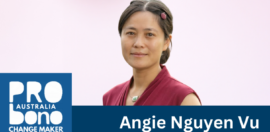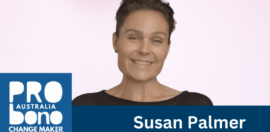What’s in an NDIS Name Change?
21 March 2013 at 10:05 am
 Changing the name of the National Disability Insurance Scheme to DisabilityCare sends the wrong message about the scheme's intent, says Estelle Fyffe is the chief executive officer of disability Not for Profit organisation annecto.
Changing the name of the National Disability Insurance Scheme to DisabilityCare sends the wrong message about the scheme's intent, says Estelle Fyffe is the chief executive officer of disability Not for Profit organisation annecto.
The National Disability Insurance Scheme has been touted as a system to empower individuals, to improve their circumstances and to give people control of their lives.
It is also about streamlining and improving a system that costs Australians millions of dollars, replacing it with a scheme expected to also stimulate the economy.
There's no doubt that the NDIS is a positive step forward.
But with news that the scheme has been named DisabilityCare Australia, we question whether this sends the wrong message about people with a disability, undermining the potential of this important reform.
The name DisabilityCare potentially creates a perception that people with disability are being cared for. It does not reflect a scheme that should be about social and economic inclusion, human rights and building people's strengths. Rather it paints an image of dependency, which is so often linked with the word "care".
Prime Minister Julia Gillard likened the scheme to Medicare and presumably this will help people understand the new program – but this does not necessarily justify the choice in name.
Over recent months, the inequitable treatment of people with disability has finally reached front page news with much debate and discussion on how to improve the lives of more than 20 per cent of Australians, who negotiate a system that is not geared to work in their favour.
The implementation of a national disability insurance scheme is for many a light at the end of the tunnel. Finally, a possible alternative funding model.
Funding is the first step in the journey to changing perceptions of the ability of people with disability. However, changing the way people view a marginalised group of people takes much work, and basic language and imagery play an important part in this process.
It is imperative we still take great care in how we portray all people. The media has come a long way in reporting stories of people with disability. Those who read the news are impressionable and will take the lead of those who generate the words within the stories.
So too, the branding of a much publicised scheme will enforce any preconceived idea of its value.
Like many organisations in the sector, annecto wholeheartedly supports the NDIS and embraces the self-directed funding model. Such a scheme fundamentally empowers people to live the life they choose and the role of a service provider should be to assist individuals to connect with communities in the way they choose.
There is much hope that the NDIS will further contribute to valued roles for people previously without opportunity to contribute to their communities.
Promoting the NDIS in the light of the potential positive implications will be as important to improved human rights in Australia as the funding itself.
About the author: Estelle Fyffe is the chief executive officer of Not for Profit organisation annecto – the people network and has worked across a range of community, health and education settings. She is the chair of the Victorian State Committee for National Disability Services.
This Opinion piece was first published in the Sydney Morning Herald.








Changing the name to Disability Care Australia comes from deficit position. This is a loaded word in itself and has been for decades.
When one looks at the Social Model of Medicine we don’t look at the many factors that make up a persons life. The fact that a large majority of people who have a disability live well below the poverty line and live in substandard accommodation. this socially excludes them and further stigmatizes them in society especially the mentally ill. I wonder if this scheme will be the magic panacea that will solve the backlog of years of neglect of our most vulnerable people.